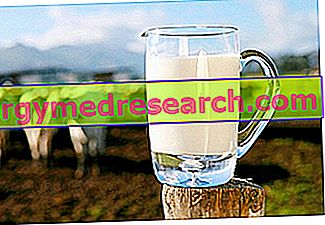By Dr. Davide Marciano
Do you drink milk as well as they say?
Is it true that milk, through its quantity of calcium, prevents osteoporosis?
Let's talk about it ...
In nature, breast milk is the primary food (unique) for the growth of Mammalian puppies, and is highly specific for each species.

It should be noted with greater attention that, after weaning, no Mammal continues to drink milk, not even that of his own species, because the nutritional needs of the adult are completely different from those of the newborn. Furthermore, no mammal consumes the milk of another species. Today, this situation is even recommended, despite the fact that cow's milk - used for calf growth - is very different in nutritional terms compared to women's milk, given that it contains a different concentration of proteins, a different protein quality and has a fat ratio saturated / unsaturated.
Therefore, to every mammal its own milk, and to this rule also the man should adapt.
They also say that milk "is good for bones". But is this true?
The milk actually has a good amount of calcium, but it is never said that being an acid food requires calcium for its disposal. So with one hand he gives and with the other he takes.
This mineral is continuously lost through urine, feces and sweat, and these losses are replenished by drawing on the calcium deposits in the bone. It is important that the calcium taken with the diet is greater than the lost one, otherwise the balance is negative, and osteoporosis occurs.
It seems strange but it has been noticed that in populations that consume a lot of milk, the incidence of osteoporosis is greater, while it is rare in countries where no milk is drunk.
We could conclude by saying that milk (maternal) is the best food for newborns and not for adults, which among other things consume the vaccine.
The calcium requirement changes according to age. In childhood and adolescence it is extremely important to ensure adequate employment. Up to about 30 years, calcium losses are generally lower than the amounts taken (peak bone mass). After this age, the body enters a "negative balance" situation: it means that the bones start to lose more calcium than they can fix.
The rate at which calcium is lost depends, in part, on the type and quantity of dietary proteins and on some lifestyle habits. For example, a high animal protein intake, sodium-rich diets, alcohol, caffeine and a sedentary lifestyle promote the loss of bone calcium.
Without falling into the usual clichés, in addition to milk, calcium can be taken from fruits and vegetables. The morning breakfast, for example, could consist of oranges, figs, blueberries and apricots, to have almost the same amount of calcium as a glass of milk. With the difference that it would be all calcium retained by the bones because the fruit is a non-acid food.



